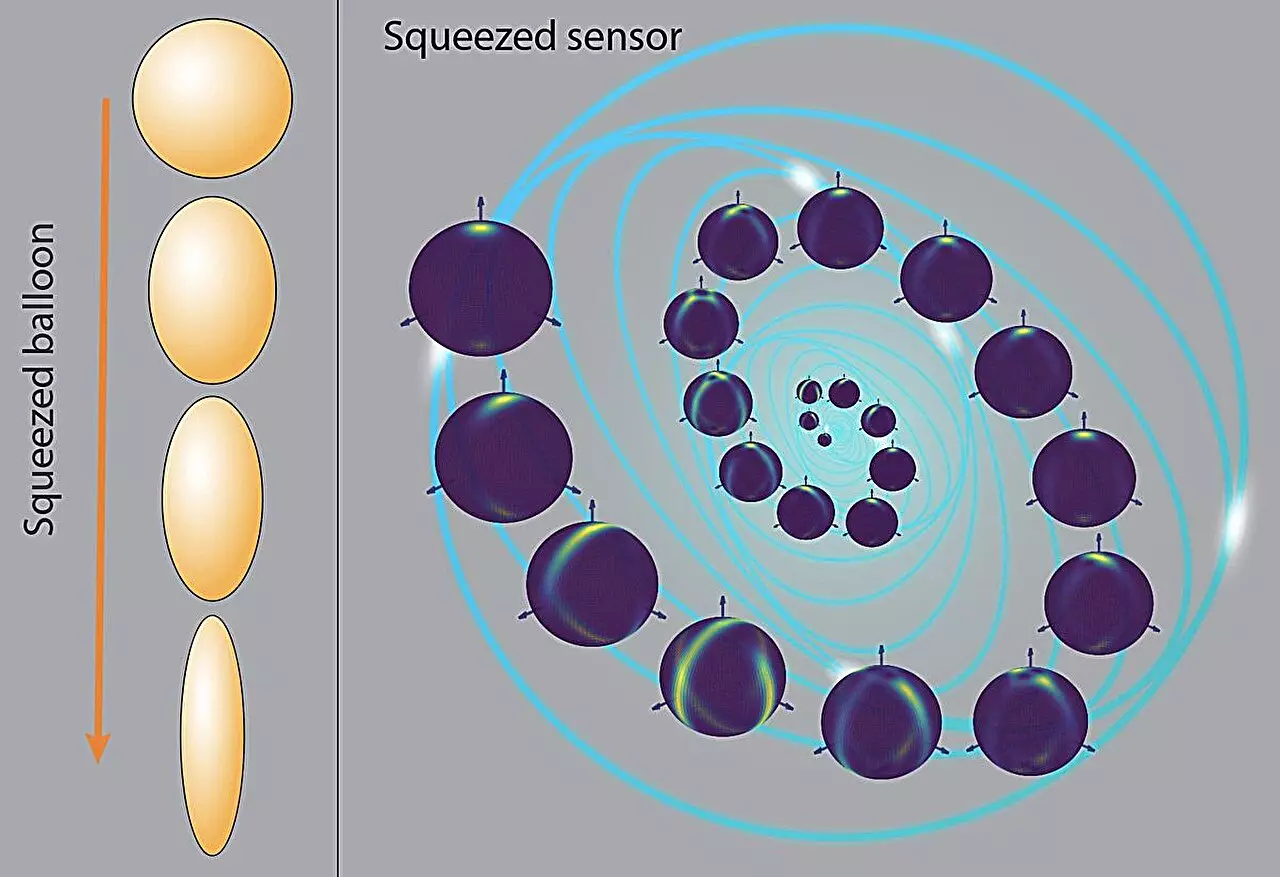Quantum squeezing is a significant concept within the realm of quantum physics that addresses the inherent uncertainties that characterize the behavior of quantum systems. This phenomenon can be likened to manipulating a balloon: when you apply pressure to one side, it bulges out on another, illustrating the redistribution of uncertainty. In quantum terms, squeezing involves narrowing the uncertainty in one observable property—such as a particle’s position—while simultaneously broadening the uncertainty in a related property, like momentum. Despite this shift, the total uncertainty remains constant, akin to the air inside the balloon which hasn’t changed in quantity but has rearranged its shape. This principle of quantum squeezing is vital for enhancing the precision of measurements in systems where specific variables need to be gauged with heightened accuracy.
The practical applications of quantum squeezing are vast and potentially transformative. For instance, researchers have utilized squeezing to enhance the accuracy of atomic clocks—devices that are foundational in many modern technologies, including global positioning systems (GPS). The ability to obtain refined measurements for individual variables exemplifies how quantum principles can be harnessed for tangible benefits. However, the challenge escalates when multiple variables must be measured simultaneously, as the need to balance uncertainties becomes increasingly complex. The intricacies involved in measuring multiple factors demand sophisticated approaches to quantum squeezing, making the need for reliable methodologies paramount.
Recent research, spearheaded by Dr. Le Bin Ho of Tohoku University, aims to elucidate the fine details involved in applying quantum squeezing to multifaceted measurements. Published in *Physical Review Research*, Dr. Ho’s work delves into how squeezing can be effectively harnessed in environments where multiple quantum attributes—such as phases within a three-dimensional magnetic field—interact with a collection of identical two-level systems. The findings from this study could pave the way for advancements not only in theoretical comprehension but also in practical implementation regarding quantum measurements.
The implications of Dr. Ho’s research extend to numerous fields where precision is invaluable. Enhanced quantum measurements could lead to remarkable improvements in quantum imaging, providing sharper images that are critical in various scientific and technological domains. Additionally, applications in quantum radar could facilitate the detection of objects with unprecedented accuracy. Within the realm of medical technology, advancements in magnetic resonance imaging (MRI) and biosensors may result from applying these refined measurement techniques, enhancing disease detection and diagnosis through improved molecular and cellular assessments.
Dr. Ho’s investigation doesn’t merely add knowledge to an already rich field; it lays a foundation for the next generation of quantum technologies. A deep understanding of the mechanisms governing measurement precision is essential for innovation in quantum sensing and imaging. Looking ahead, Dr. Ho anticipates exploring how varying types of noise influence squeezing mechanisms. This exploration can lead toward strategies that mitigate noise, ultimately resulting in even more precise measurements and possibly unveiling new phenomena within quantum mechanics.
Quantum squeezing is an essential concept that significantly advances our ability to make precise measurements across various challenging contexts. As researchers like Dr. Le Bin Ho delve deeper into the complexities of this phenomenon, the prospect of achieving unparalleled accuracy in quantum systems becomes increasingly tangible. The breakthroughs on the horizon possess the potential to not only elevate current technologies but to also create innovative solutions that could transform fields ranging from telecommunications to biomedical applications. As we continue to explore the landscape of quantum mechanics, the insights gained will undoubtedly inspire future technologies that push the boundaries of what is possible.


Leave a Reply
You must be logged in to post a comment.